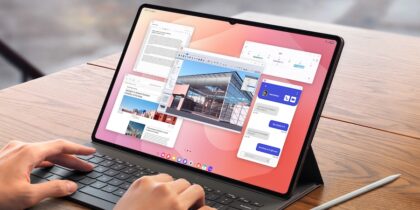This is the year we’ll learn what a zettabyte looks like, at least in theory. Global Internet traffic will surpass one zettabyte in 2016, after increasing fivefold over the past five years.
That’s 1 billion terabytes worth of data, or 1 trillion gigabytes.
The key factor driving this explosion of data usage is the increasing use of mobile devices that enable both consumers and enterprise employees to connect from anywhere at any time. According to Fortune, global mobile traffic will grow eightfold over the next four years, reaching 30.6 exabytes monthly by 2020.
As more and more companies embrace mobility, the question becomes: How much data is too much?
On one hand, modern business leaders understand that mobile solutions are key to boosting employee productivity, improving enterprise collaboration, scaling innovation and engaging customers. On the other hand, cellular data plans can get expensive when they’re covering hundreds or even thousands of employees.
So, how much data is enough for an enterprise? And how can business leaders and IT departments keep employees from using more than they really need to do their jobs well?
Curbing Data Usage Without Curbing Productivity
Affordable unlimited data plans are quickly becoming a thing of the past. Cellular providers that still offer this option do so for a hefty price and then penalize users with slower Internet speeds after they reach a certain data threshold.
This puts the burden on businesses to find (and enforce) their own sweet spots; in other words, to pay for just the right amount of data and then ensure users don’t exceed their limits, leaving less data for other employees or racking up expensive monthly overage charges.
The right solution is part people management, part technology. Here’s where to start:
1. Determine how much data you’re already using and where you can cut down
If some or all of your employees already have smartphones covered under the company plan, it should be easy to determine how much data, on average, individuals use each month. But chances are, many currently use more than they really need to get the job done. By taking a close look at the usage patterns of “big spenders,” you can determine where data is being wasted.
For example, are some employees forgetting to connect to Wi-Fi while at home or the office? Are they unnecessarily downloading large files or apps while on the road? Are they leaving apps running in the background? Worse yet, are they streaming music or videos without connecting to Wi-Fi? Watching a movie on Netflix uses between 0.7 and seven GB per hour, depending on the video quality.
2. Set data caps for individual users
Individual data caps help ensure everyone has enough to work effectively, without jacking up the company’s cell phone bill. But keep in mind that some employees need more data than others.
For example, roving workers or those who travel frequently for business will need to rely more heavily on cellular service than those who work from the office or from home, where they can connect to Wi-Fi. So it’s important to provide on-the-go employees with enough data to get their jobs done, as well as training around what is and isn’t necessary to do without a Wi-Fi connection.
3. Create and communicate data usage policies for employees
Your employees probably aren’t wasting data on purpose. Some might not realize which tasks use data, or just how much data those tasks require, while others aren’t monitoring their usage as closely as they would if they were footing the bill. By putting policies in place to curb some of the aforementioned data wasters, and then educating your team on data best practices, you can cut costs without slowing productivity.
4. Use mobile device management tools to enforce policies
Mobile device management software enables IT teams to closely monitor data usage, set data caps for individuals and notify users in real time when they’re approaching their limits. IT can also use these platforms to restrict wasteful behavior, such as streaming via cellular service, and analyze usage trends to determine which employees need more or less data for legitimate business reasons.
Enterprise mobility is here to stay, but providing employees with the mobile solutions they need doesn’t have to break the bank. With the right tools and strategies in place, companies can keep their teams connected without using anywhere near a zettabyte of data.
Samsung Galaxy smartphones can help your company stay at the forefront of innovative mobile solutions.








